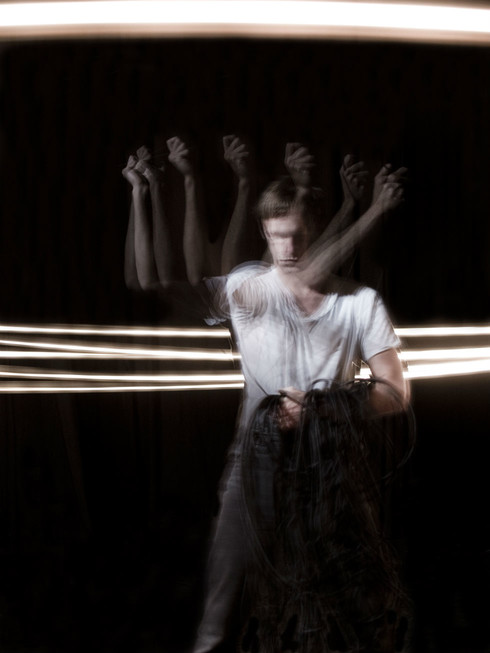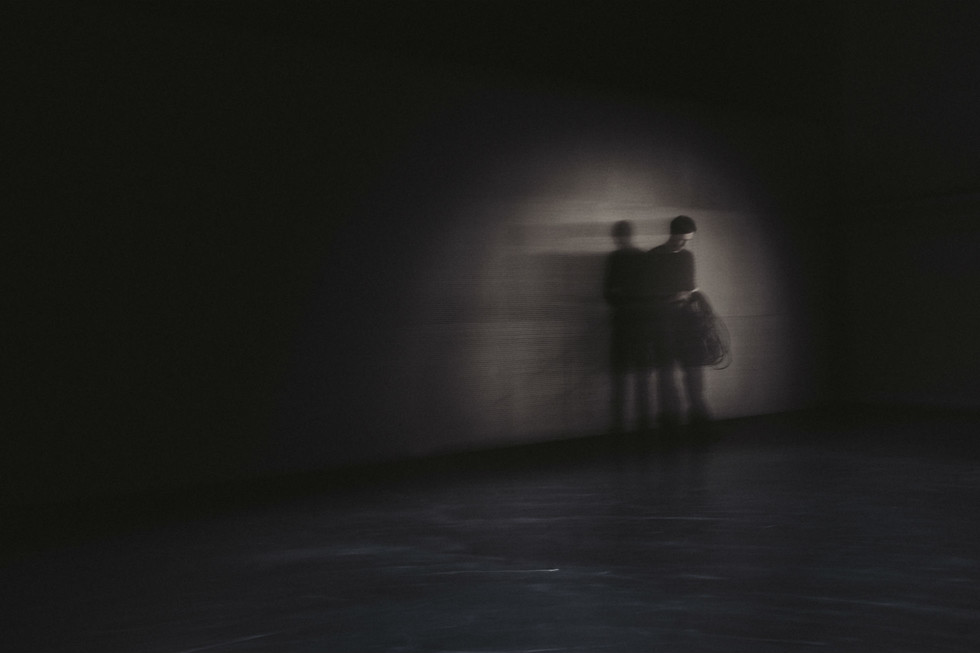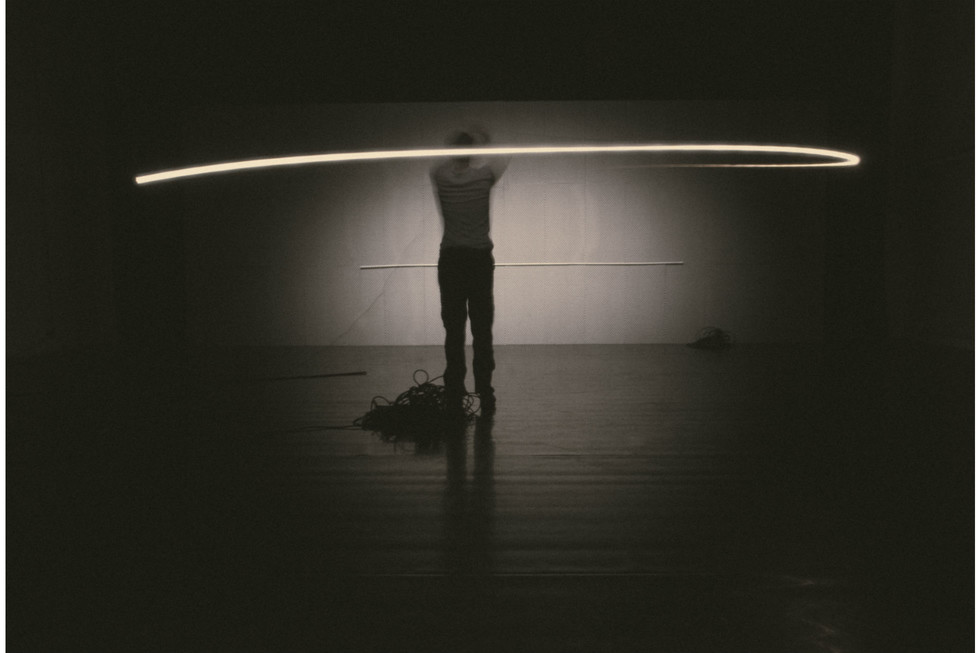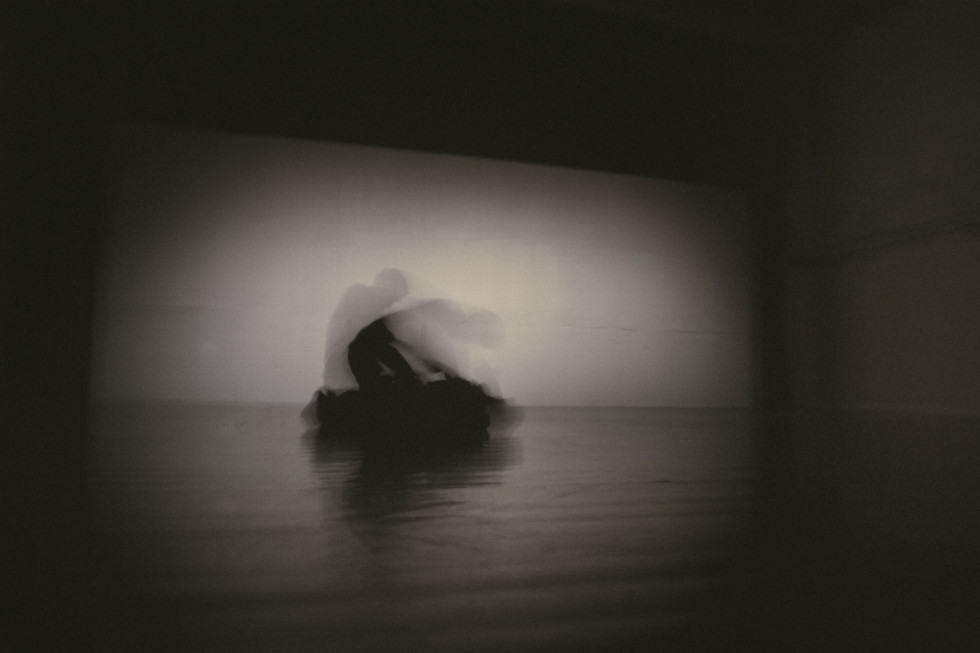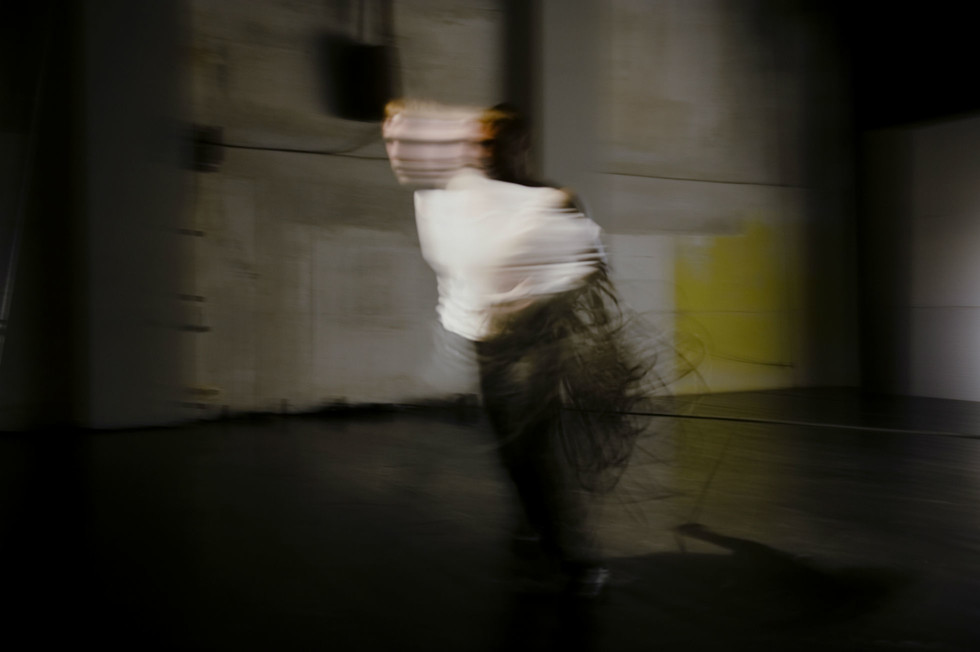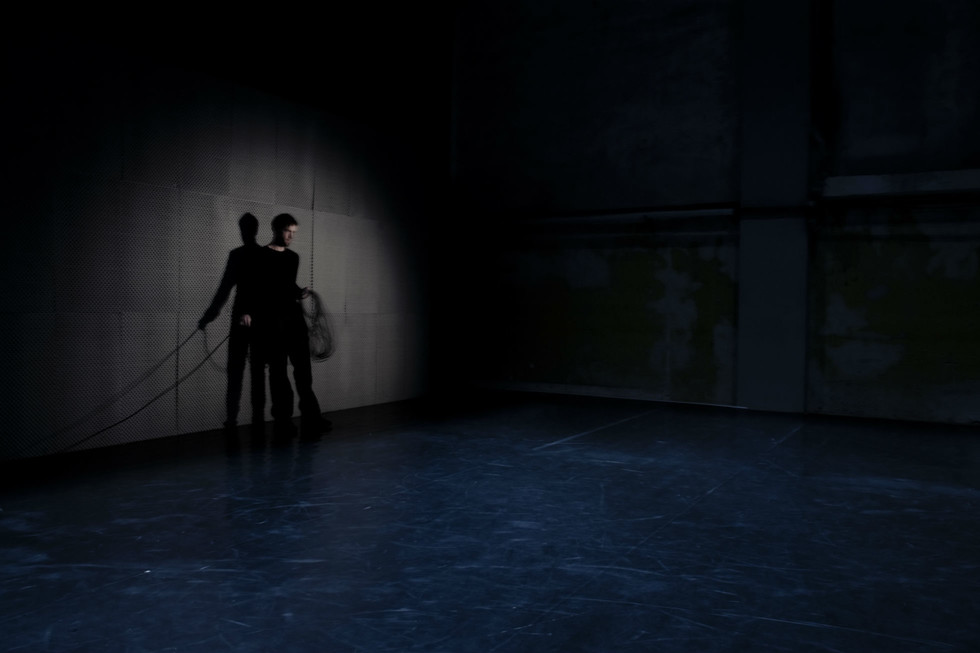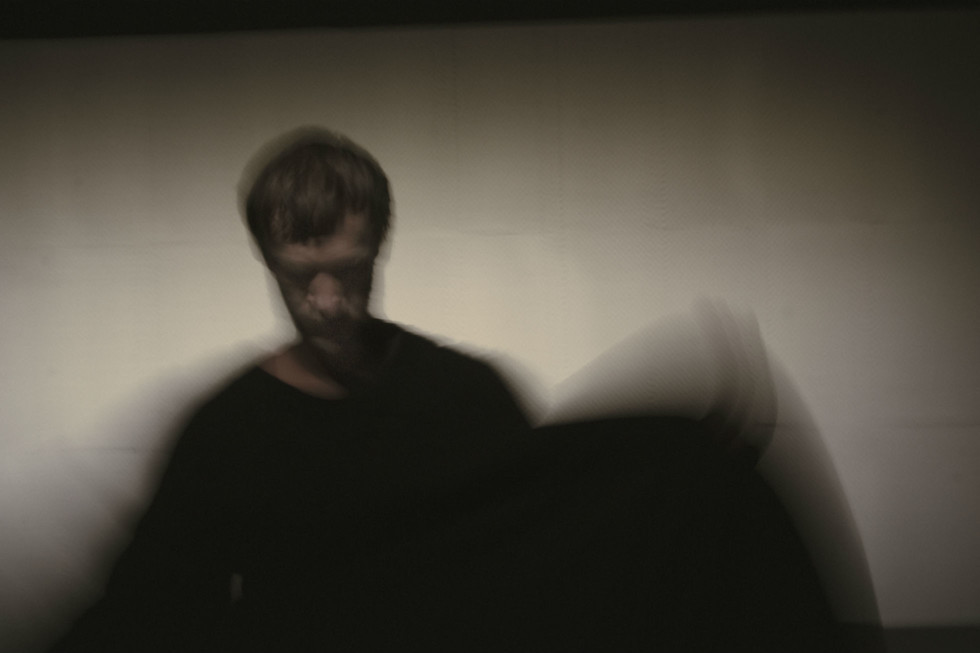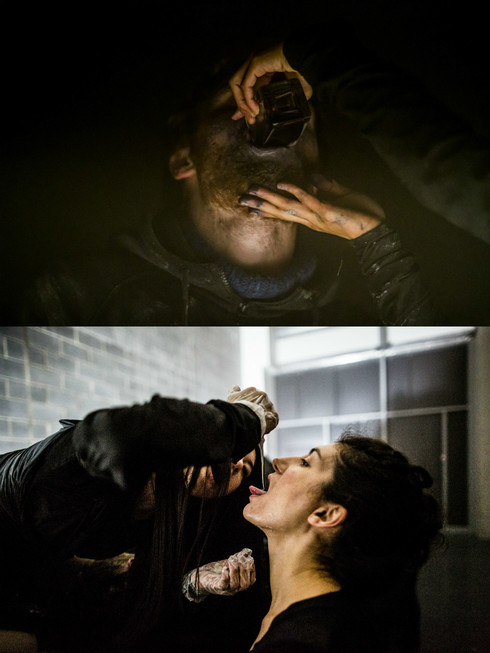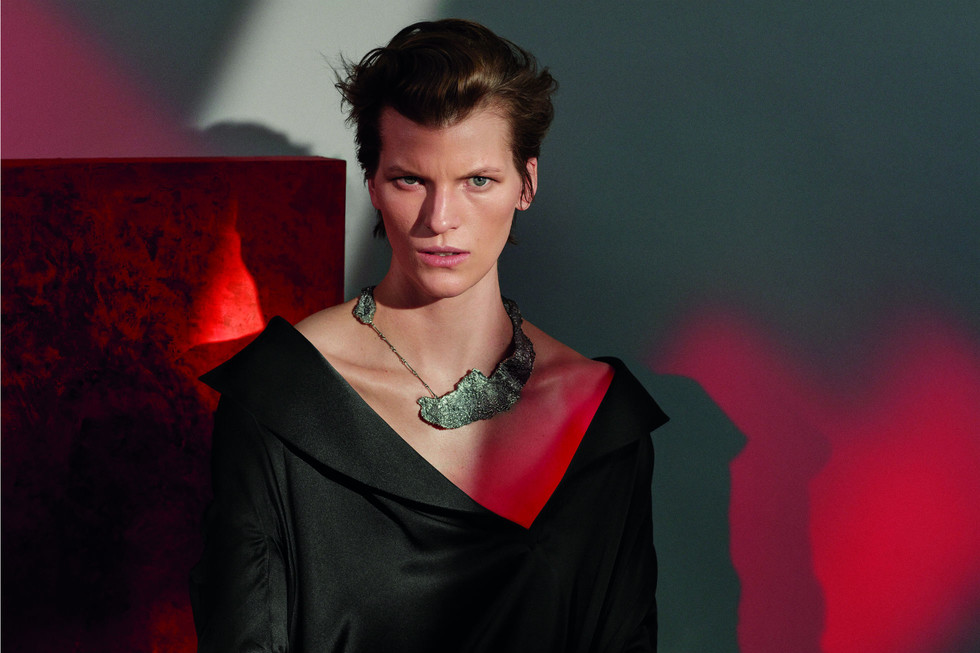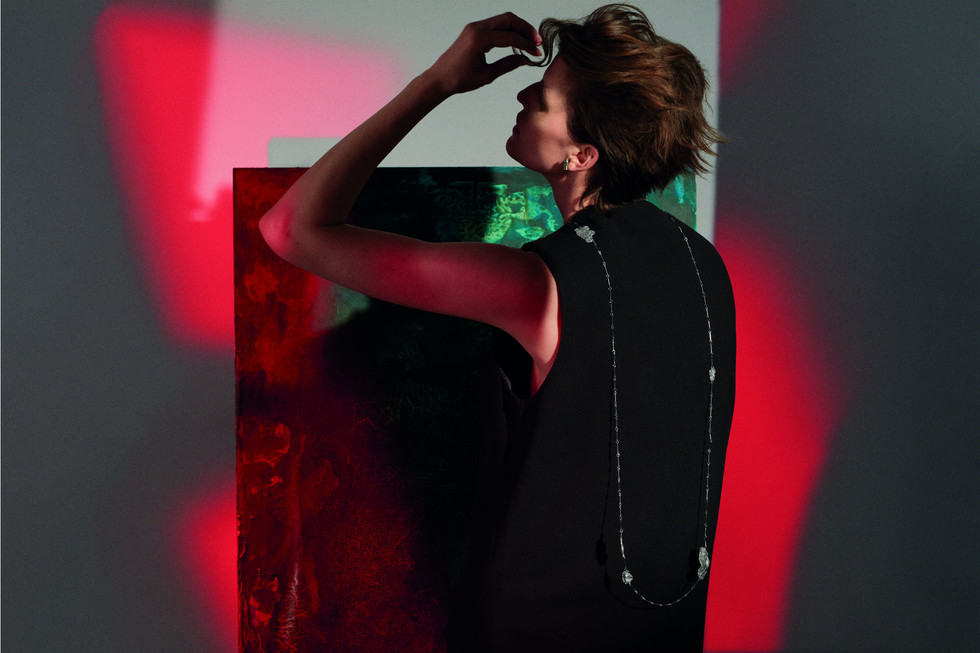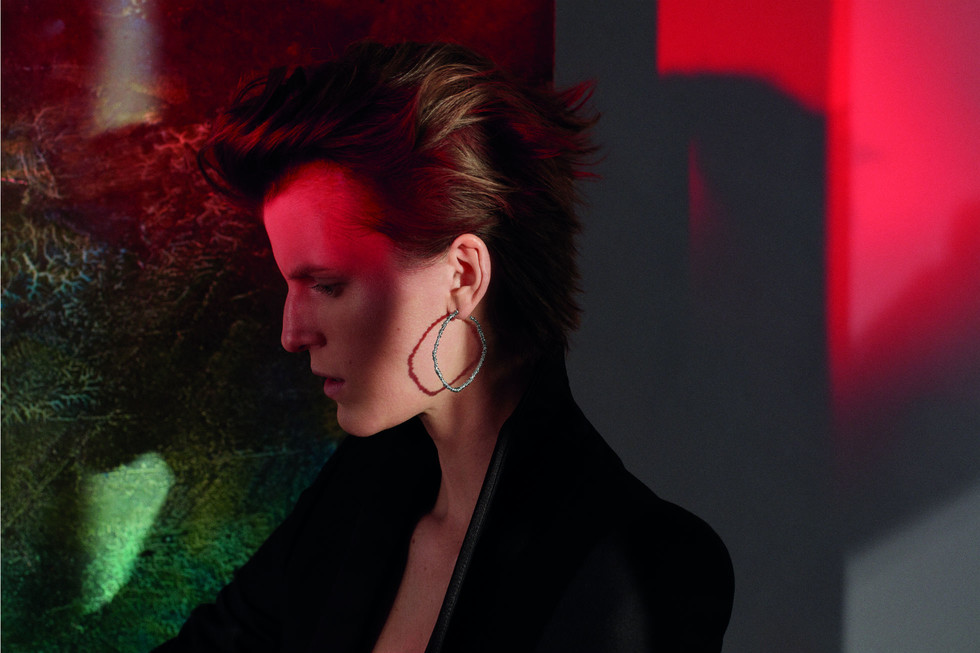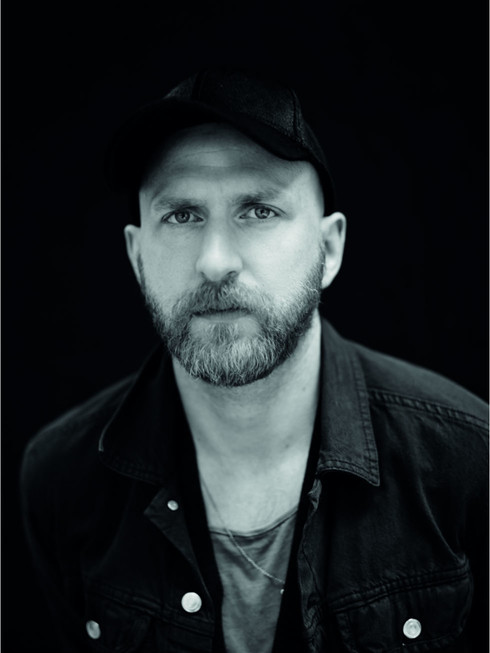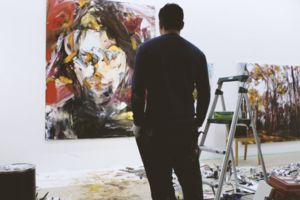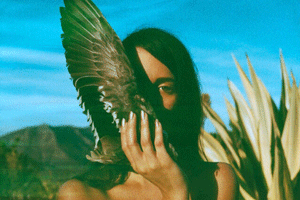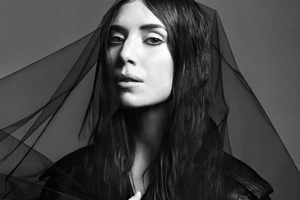GRIND – A MOMENT OF TRUTH WITH YOUR OWN SELF
Written by Ksenia RundinYesterday I discovered that silence could be constructed of something immaterial. A darkness followed by a sound and a light went through my emotions, my thoughts and my body, turning into a material product – the silence. Surrounded by the Bauhausian atmosphere of the Orion Theatre in the company of approximately two hundred people, with a pitch darkness squeezing me, electric sounds hunting my blood and a feeble light manifesting its fragility, I felt left in a dead silence completely alone with my body leaning from the fifth row desperately trying to reach the stage. It was a pure moment of me experiencing the authentic nudity of my inner self. Jefta van Dinther was performing his imminent GRIND, while I was grinding away in my fears, memories and desires, having dialogue with myself. It felt like during one of those moments when you are standing in front of an audience and the silence gets so deep that you have an obligation to break it here and now. Yesterday, was the moment when I had no choice but to break the unbearable silence between me and myself.
Glancing back at the history of modern dance and performance art, I think of John Cunningham’s idea that no medium should be subordinate, where he used music and décor as independent elements as opposed to complementing the choreography. Jefta van Dinther, Minna Tikkainen and David Kiers have now moved a step forward, creating both a new dimension for uniting the independence of movement, sound and light and also a unique way of perceiving those as a new material product. The product in its turn becomes unique for every individual beholder based on the individual complexity of his/her mind containing memories and feelings. Such approach can be considered very democratic as the influences, which you as a spectator become a subject for, are merely based on your own feelings and experiences. You are alone in your game, where you are exposed to your own self. Isn’t that a kind of experience we need in our times of political uncertainty, fashion race and social insanity based on the power of consumerism, exterminating our ability to stay individual? GRIND is a pure luxury to have a look inside your own self.
How did you decide to become a dancer? When did you first time discover dance as an art form?
It is a long story that goes back to my very early ages. Normally, I would say that my dance story starts with my proper dance training, which began when I was seventeen and I entered the dance school already one year after that in Amsterdam. I moved to Amsterdam when I was eighteen, studied there and had a bit of a normal trajectory as a dancer, slowly becoming a choreographer. But in fact, I think it started a lot earlier. I grew up in quite precarious situation. My parents were missionaries and they would travel around the world and I would actually have my first performance experience on the streets as a kid. So I would be a storyteller, staging stories from the Bible. My parents would perform on the streets and I would be the flower. That was actually the first time when I was performing in front of people. And then I also was, as a kid, a part of Christian groups that would do singing and dancing on the streets. I only made the connection to the kind of performing I do nowadays quite late in my life. In a way, the lifestyle is very similar.
So, your art was kind of born out of a religious mission?
In a way. In a way you can say that. And I think my work, my art work deals a lot with, what people keep calling, - something religious. I guess, it has spiritual quests. There is something about transcending, what is the material world and how do we use the material world to transcend to the immaterial world.
How did the idea of this particular collaboration in GRIND between you, Minna Tikkainen and David Kiers arise?
It started with Minna and me. We had known each other for a very long time, because I was dancing in productions, where she was a lighting designer for. And we said like “Let’s try to do something. Let’s meet and see how to work together!” Then we got a residence here in Stockholm at Weld, a space by Odenplan. It is an amazing space, a studio in a basement, like a shaft. They gave us a chance without any demands. They practically said, “Here you have the studio. Play around!” We started in materials and ideas that we had not managed to fit in other productions. Very soon we started noticing that it started boiling down to a kind of concept, which had to do with synaesthesia. We did not start studying synaesthesia. We did not want to get into it from the theoretical point of view. But we were interested in this idea of what happens when elements start to mix in way that they also become inseparable. And how music, light and choreography or body starts to act as if it was synesthetic. To perceive sound through the body or a light as sound, or vice versa. Later we brought in David Kiers, the sound designer. How could we create a body that exists because of the kind of intertwinement of these elements? How does it create something that is not light, nor sound, nor choreography, but actually is another kind of body that only can exist because of this interaction? So, if you put on the light, it would kill the show. If you turn off the sound, it would kill the show. If you took out the body, it would kill the show. Looking for only materials that actually create that otherness together.
It is very interesting concept, because the body here loses its centrality which it used to have in traditional dance, like ballet. The angles and forms it creates becomes unimportant.
Exactly! There was a kind of movement, a kind of stream of taking away the body. It was a conceptual approach to dance where choreography can exist not only in movements of the body but also could be a movement of plastic bags or something like that. Here, I think, in the end what we are choreographing is something immaterial, very dark. It is literally very dark in the show, you hardly know what you see. You can see the stuff but you cannot actually grasp what you see. But it is something about that it really collides with your perception and it brings about some sort of almost like a hallucinatory state. Thus, it is very material, although immaterial.
In one of your interviews you were talking about your other show “Plateau Effects” and you said, “Think of the performance as plateau effects. Let’s say various plateaus that change level but are also stable.” How should we think of GRIND in such case?
Many of my pieces deal with a kind of plateauing. Someone wrote once “Jefta is equivalent to a slow food cook in choreography.” The time is really elastic, stretched out. I often work with very slow progressions of building up, you have this tension that evolves but extremely slowly. It really builds up in you and you need it to change. And I think GRIND does that too. There are five or six scenes that are interconnected but each scene is somehow based on a labour interaction with a material. The person on stage, which is me, is interacting with a cable or interacting with a big piece of cloth. And every scene is very slowly leading to a trance. But each scene is also made of an effect, such as visual, sonic, corporeal effect, which normally would last for maximum thirty seconds (otherwise it is not an effect anymore). But instead of providing effects we are continuously building up to these effects.
The performance slightly reminds me the famous ballet “The Rite of Spring” (1913) composed by Igor Stravinsky with Vaclav Nizhinsky dancing in it, where the plot was considered as a succession of choreographed episodes instead of the classical storytelling with a clear narrative line.
Some people view GRIND in a very abstract sense as it is about a play of perception, like a visual arts piece. Because of their dramaturgy and the figure who is going through it, it starts to become narrative and give rise to associative potential. People see a lot of things. There is a struggle the dancer is going through and people associate to murder, torture, ecstasy, violence. They have something very particular in their memory about being scared. Thus the form is very explicitly abstract while the experience is not. This is what creates a very interesting game. People realize, “This is an abstract work but I am actually having so many memories, so many associations and so many stories.”
You said once that you are challenged by things you do not understand and you try to create something that provide uncertainty. If we apply these to concepts on GRIND. What is that you do not understand about it? And what uncertainty have you created in there?
People live through the performance not knowing what it was they were going through. It touches quite dark parts in them, dealing with something relentless and violent. It enters a kind of subconscious place. I work often with a kind of altered state. It varies from show to show: it can be through synaesthesia for example but also say, depression. When you are in an altered state, things are fuzzy. And I think, when I was making GRIND, it was for the first time I started to trust the space of creativity that has something more to do with dreams or nightmares – that fuzzy space that I can access not only when I am dreaming but also through having music in my ears, closing my eyes or maybe when I am tired. With GRIND I started to trust that subliminal place, thinking “If I feel this, if I can access this, maybe it is also a way for me to stage that. And for people to experience that somehow.” Unlike a usual theatrical concept, offering a collective experience, GRIND is not a social place actually, not a collective experience. Everyone is alone in the dark. They cannot hear the person next to them, they cannot see anything. Thus, it becomes utterly personal to them.
I would say it has a certain connection to AI (artificial intelligence), where you bring in the technology having effects on the human beings, hasn’t it?
The whole AI-chapter I am working a lot with now. It is something that is coming up in a lot of my work now. It is a reality, like it or not. You have plastic inside of you and your smartphone is already an extension of you, even it is outside of your body.
Do you still practice Kundalini Yoga?
Yes, I do it before the show. Usually I do work out but such type of training is too heavy when I have to perform. So, I practice Kundalini Yoga then. It is very repetitive and it is a nice way to get in touch with yourself. I also meditate.
If I translated your performance into paintings, I would think of Francis Bacon because in your performances the invisible points out the visible and the intangible feelings become material. What would you say about that?
Yes. The reference to Bacon is maybe about making the material of something internal. Maybe it is an easy link, but the monstrosity is a way of choreographing an internal space, manifesting through the face, through the expression. Dance is so much about not dealing with the head and with the face, because the body is supposed to be expressive through its form and tonus. I am very engaged with making manifest the internal processes and put that context in the space, through the expression. I am kind of interested in what leaks out of the process, during the co-creation with the audience.
Do you use art as a source of inspiration, going for example to any pinakothek in Berlin?
I see quite a lot. Visual art is very much present. I am into video work and I like Mark Leckey, who is a British visual artist. There is a video, which he actually made about the club culture “Fiorucci made me Hardcore”. It is a brilliant art film that deals with a kind of archive of the club culture of the 1970s, 1980s and 1990s in Great Britain. It is a beautiful collage. I also like David Lynch. I am very busy with the uncanny and with this idea of what is familiar but not, what is social but twisted. Visual art, music and a lot of film. My work is also very cinematic.
What dancers inspire you?
Above all, clubbing. It is contemporary clubbing. I entered that world when I was twenty eight. Clubbing is interesting for me because it is one of the only proper contemporary rituals we have. It is one of the only places where people engage in the present moment for the sake of present moment and without making sense. It is useless in some way. It is about having fun and escapism but also is a certain and spiritual practice. To engage in something what is actually present, yet immaterial, I found that very spectacular. Clubbing puts people together, they dance for hours and hours. There is something transcendental about it. You use your body, you use the music, you use the light and that dark space in order to have a collective experience that is not material.
Do you acquire any inspiration from fashion?
Fashion is tricky to work with directly. I am busy but it is something I have hard time to translate into my work. Dance has a kind of strange relation to costume and historically speaking, fashion is considered costume there. Of course, fashion is much more than that. I usually down-dress people a lot on stage or I use nudity. Relatability on stage has been very important to me – how ordinary people can relate to what happens on stage.
If you got a chance to collaborate with an artist, what artist would you choose and how this collaboration would look like?
To be honest, I would love to have been there with John Cage, Merce Cunningham and Robert Rauschenberg. It must have been a remarkable time to be in dance.

